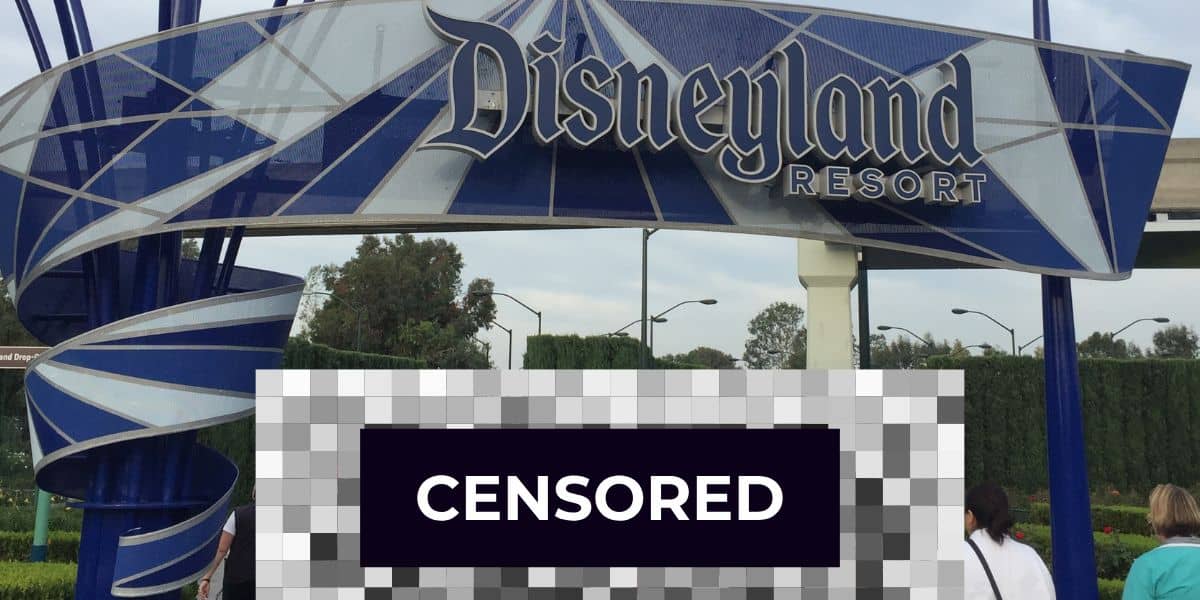“It scanned my face before I even realized what happened.”
That’s how one Disneyland guest described their recent park entry experience—a moment that felt both futuristic and unsettling. Imagine walking up to the gates of The Happiest Place on Earth, expecting the usual fumbling with your ticket or Magic Key pass, only to have the turnstile flash green before you even lift a finger.
Convenient? Yes. But for some, it’s raising more questions than answers. Is this just Disney magic—or something more Orwellian?

Disneyland Facial Recognition Sparks Controversy: Welcome to the Future—Smile for the Mouse
As the gates of Disneyland quietly begin transforming into high-tech facial scanners, the magical world of theme parks may be entering a new era—one that promises speed and ease, but also invites debate over ethics, privacy, and the evolving guest experience. So what exactly is going on behind those iconic turnstiles? Disneyland has begun rolling out facial recognition technology as part of an effort to streamline guest entry.
Rather than scanning a ticket or pass, the system uses facial data to grant access—essentially matching a guest’s face to their reservation or annual pass. The move aims to improve the guest experience by reducing wait times, cutting down on bottlenecks, and helping families begin their magical day without friction. It’s a bold step forward in Disney’s ongoing efforts to blend cutting-edge tech with legendary storytelling.
And they’re not alone. Across the country at Universal Orlando Resort, facial recognition tech has already been integrated at Islands of Adventure and Universal Studios Florida, with relatively smooth results. But while Universal’s implementation has flown mostly under the radar, Disney’s trial is drawing more public attention—and scrutiny.

Not Everyone’s Smiling
While some guests have applauded the innovation, others are voicing serious concerns over privacy, data storage, and surveillance. “I just wanted to ride Space Mountain,” one guest commented online. “Now I’m wondering what else Disney wants to know about me.” Critics are worried about where this could lead. Will fingerprinting or biometric scans become the norm? Will Disney begin collecting data beyond what’s needed for park entry?
Some have gone so far as to sarcastically suggest, “What’s next, a blood sample at the gate?” Of course, there’s no indication that Disney plans to go to such extremes. The company has emphasized that facial recognition is optional (for now) and part of a larger push toward contactless, seamless guest experiences.
.. sometimes I think they’re going a bit overboard with this shit. Next they’re gonna ask you to submit fingerprints and a blood test. – @FantogemeDan on X
.. sometimes I think they're going a bit overboard with this shit. Next they're gonna ask you to submit fingerprints and a blood test. https://t.co/gzX5qzYrOu
— Dan – Well and truly in my Joker Arc (@FantogemeDan) April 4, 2025
Still, the unease lingers—especially among international travelers, who may be unfamiliar or uncomfortable with facial scanning being normalized as part of tourism.

The Magic (and Risk) of Convenience
There’s no denying the appeal. The average guest can save precious minutes by not fumbling for tickets or unlocking a smartphone app in the sun. And in a post-pandemic world, contactless interactions remain in high demand.
Pros of facial recognition in theme parks:
-
Faster entry and shorter lines
-
Reduced need for physical tickets or mobile devices
-
Greater security (matching faces to passes can deter fraud)
Cons and concerns:
-
Privacy issues and consent
-
Questions over how and where biometric data is stored
-
Potential surveillance overreach or misuse of data
It’s a classic case of innovation versus ethics—and Disney is walking that tightrope in real time.

What This Means for the Future of Disney Parks
Facial recognition is just the latest in a series of tech-driven changes Disney has made to reimagine the park experience. From MagicBands to Genie+ and mobile ordering, technology is reshaping how guests move, spend, and interact with the parks.
This newest innovation could mark the start of a broader shift, where your face becomes your park ID, credit card, and FastPass—if you’re comfortable with it.
But this also raises a deeper question: How much are we willing to trade for convenience?
For Disney, balancing magic with modern expectations may now include navigating public concerns about digital privacy. As more companies follow suit, the entire theme park industry may be facing a high-stakes challenge—how to innovate without losing trust.
And in that challenge, the real magic might not lie in facial scanners or faster entry—but in how much control guests are given over their own experience.

Conclusion: The Disneyland Facial Recognition Pilot Program Is Here To Stay
As Disneyland moves forward with facial recognition technology, guests find themselves at the intersection of magic and modernity. Whether this is a leap forward or a slippery slope depends on how the system evolves—and how much transparency and choice Disney offers along the way.
For now, the parks are still full of laughter and dreams—but behind the smiles, a quiet debate is unfolding.
Will you be ready to smile for the scanner on your next visit?
